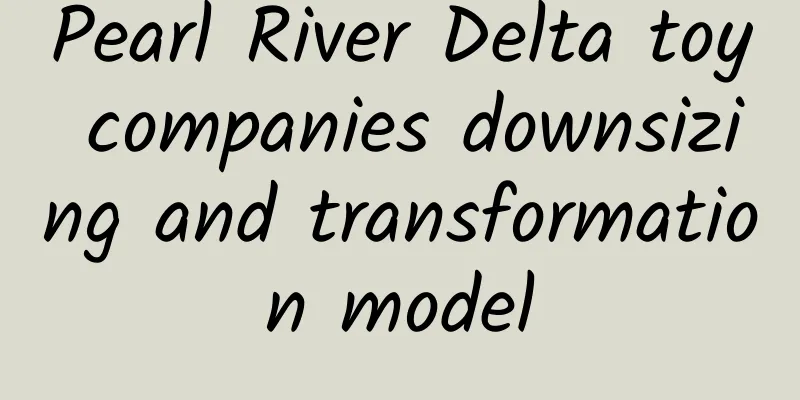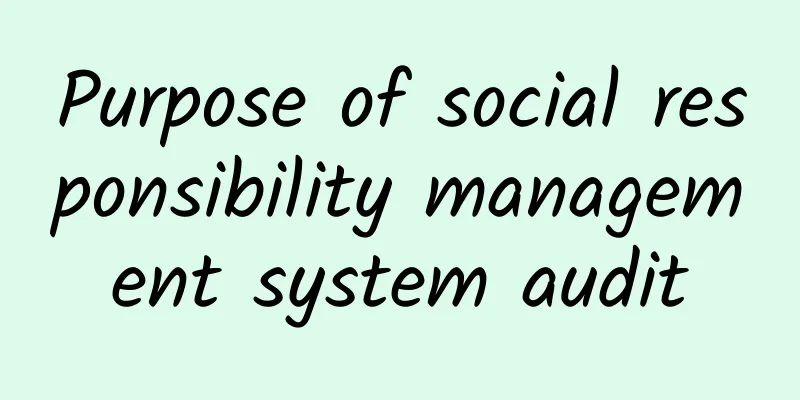Pearl River Delta toy companies downsizing and transformation model

|
Some labor-intensive enterprises in the Pearl River Delta, such as toys, clothing, and shoes, are once again being pushed to the limit of their tolerance due to cost pressure. Li Weijian, chairman of Dongguan Jiansheng Industrial Co., Ltd., who has been working in the toy industry for more than 20 years, is confused about the prospects of this traditional industry. Like many of his peers, he has encountered a development bottleneck. Although orders are gradually picking up, costs are also rising. He has not yet found an effective way to control costs, so he has to choose to reduce the scale of production and reduce the number of workers in the toy factory from 5,000 to 6,000 at its peak to a few hundred at present. The number of large toy factories in the Pearl River Delta has decreased. Gu Wu, general manager of Shenzhen Huakun Industrial Development Co., Ltd., a toy export trader, has a deep understanding of this. "This year, I have been troubled by the difficulty of finding factories to place orders. Some large-scale Hong Kong and Taiwan-funded toy manufacturers that I have cooperated with for many years have closed down or moved one after another. It is difficult to find suitable new suppliers all of a sudden. The technical barriers in Europe and the United States are getting higher and higher. I am worried that small factories cannot meet the requirements, so I have to turn down many orders." Rising labor costs and raw materials, coupled with exchange rate fluctuations, are eating away at the last bit of profit in labor-intensive industries. A questionnaire survey conducted by the China Chamber of Commerce for Import and Export of Light Industrial Products and Crafts on 45 light industrial export companies such as toys and shoes in November this year showed that since China resumed the appreciation of the RMB on June 19, 35 of the 45 light industrial export companies have seen a decline in profits. If the RMB exchange rate appreciates by 1 percentage point in the future, 20 of the 45 companies are expected to see a decline in profit margins of more than 3%. The loss of cost advantages is accelerating, export risks are increasing, and faced with a new cold wave, labor-intensive enterprises have to adjust their pace. Three major risks: cost, quality and trade barriers Li Weijen joined the toy OEM team in 1989. Relying on the low labor cost advantage of the Pearl River Delta and the excellent product quality, the company expanded rapidly. His export business was in full swing, and he became a supplier to large toy purchasing giants such as Mattel, Walmart, Disney, and KFC, occupying a place in China's toy manufacturing. "These toy purchasing giants have very strict requirements on products and will send third parties to inspect factories from time to time. It is not easy to enter the supply system of these companies. For example, there are only seven companies in the world that can meet the standards of KFC in producing toys and gifts, and we are one of them. KFC's purchasing volume is very large, and a single order can easily involve tens of millions of toys." Li Weijen said that he once won by numbers, but in recent years, with the huge fluctuations in raw material prices and the continuous increase in labor costs, coupled with exchange rate fluctuations, the risks of such large-scale OEM exports have become increasingly greater. This year, the sharp rise and fall of cotton prices has put the textile and garment industry in a passive state, while the toy industry has experienced the fluctuation of raw material prices even earlier. The toy industry has a wide variety of raw materials. Companies may purchase thousands of plastic raw materials in just one year. The pricing of toy products with little technological content is closely related to the price of raw materials. Since 2007, the price of raw materials has fluctuated greatly. If you are not careful when quoting toy orders, you will lose money. Li Weijian and Hejun, a toy giant with a factory in Dongguan, once competed for a robot toy order worth over 100 million yuan. The price of the robot toy he quoted was 200 yuan, while Hejun quoted 150 yuan. Hejun won the order with its price advantage. However, Li Weijian calculated the cost and found that if the raw materials rose a little, Hejun would definitely lose money according to Hejun's quotation. Hejun collapsed in October 2008, causing an uproar in the industry. In Li Weijian's opinion, this was not only related to the shrinking orders caused by the outbreak of the financial crisis, but also more to the problems of internal management and operation of Hejun. The expansion of scale by price-cutting competition led to continuous losses, and finally the company's capital chain was broken. Cost budget is crucial for the labor-intensive toy industry, but it is also a very high requirement for most toy companies with a profit margin of 2% to 3%. In recent years, the price fluctuations of raw materials often exceed the expectations of companies. For example, the price of plastic once rose from 11,000 to 12,000 yuan per ton in the first half of the year to 17,000 yuan per ton, and then plunged to 7,000 yuan per ton in the second half of the year, and then soared to 10,000 yuan per ton after a while. "We used to quote prices once a month, but due to fluctuations in raw material prices, in the past two or three years, prices have changed every day, which is very difficult for toy export companies. For a large order like KFC, the cycle from R&D and design to delivery is often a year, and ordinary orders take two or three months from order placement to delivery. We are helpless in quoting prices. Labor costs are also rising. Currently, the wages of workers in Dongguan are generally above 2,000 yuan, and the increase this year has reached 20% to 30%, while it is not easy to increase the price of exported toys by 5%." Li Weijen feels helpless about the current situation of toy OEM. It is not just the cost risk. The rising trade barriers between Europe and the United States are also increasing the export risks of toy companies. The United States is the main export market for Chinese toys, but in recent years, Chinese toys exported to the United States have been frequently recalled. Recently, the U.S. Consumer Product Safety Commission, the U.S. import consumer product regulatory agency, said that if Chinese toy manufacturers do not eliminate safety hazards, they will face more recalls. In addition, the European Commission will officially implement the "EU New Toy Safety Directive" on July 20, 2011. This directive is currently the most stringent and demanding toy regulation in the world. Li Weijian never dared to relax when it came to safety and quality, as some of his friends had paid a heavy price for this. In 2007, Zhang Shuhong, the boss of Foshan Lida Toys Co., Ltd., hanged himself in response to the large-scale recall of Chinese-made toys by Mattel, the largest toy manufacturer in the United States. This incident shocked Li Weijian greatly. Betting on slimming down Guangdong accounts for about half of the world's toy production. In the past few years, Li Weijian has witnessed the collapse of many toy manufacturers around him. He lamented that it was not easy for his toy factory to survive. Since last year, he has made drastic strategic adjustments to the company, rapidly reducing the size of the toy factory to a few hundred people, while strengthening R&D and design, focusing on OEM for some mid- to high-end customers. At the same time, he has freed up a lot of energy to enter the new field of LED lighting. At present, domestic enterprises are flocking into the ranks of LED lamp manufacturing. Li Weijian said that he did not blindly follow the trend to enter this emerging industry, but carried out transformation and upgrading in a planned manner. Under the general trend of rising labor costs, it is necessary to increase the added value of products. Li Weijian's initial calculation is that it takes at least 2,000 workers to produce toys with an annual output value of 100 million yuan, while it takes less than 300 workers to produce lighting fixtures with the same output value. A toy can only be sold for a few to a few hundred yuan, while an infinitely variable street lamp can be sold for 2,000 to 3,000 yuan, and some LED street lamps can even be sold for tens of thousands of yuan. In addition, the raw materials of lighting fixtures are far less complicated than those of toys, so it is relatively easy to calculate the cost. Through acquisition and integration of multiple resources, Li Weijian has established a production base of various types of lighting lamps covering more than 80,000 square meters in just over a year, with an annual production capacity of 1 billion yuan. He admitted that the core technology of LED lamps is in the hands of developed countries such as the United States and Japan, and the company's LED lamp chips are still basically imported. However, it has made great breakthroughs in the development, application and design of LED lamps, and is cooperating with some lighting source research institutions to break through the core technology. "Both domestic and foreign companies are encouraging enterprises to develop in the direction of energy conservation and environmental protection. This emerging industry has a huge market space. Therefore, our energy-saving lamps have entered the domestic and foreign markets with our own brand from the beginning. We have just received a large order from Chile recently. Because we were previously engaged in the export of electronic toys and are familiar with European standards such as the RoHS Directive, we have also smoothly entered the EU and other markets." Li Weijen explained that emerging industries are more likely to cultivate their own brands, and the toy industry is already very mature. The design, brand and channels are basically in the hands of toy companies in the United States, Japan and other countries. In addition, 80% to 90% of Chinese toys are exported, and there is a lack of toy sales channels in China, and expanding domestic sales is also difficult. After the labor-intensive toy industry "slimmed down", Li Weijen clearly felt that the cost pressure was greatly reduced. He had more options for toy orders and was not in a hurry to rely on quantity to maintain the operation of the factory. He has continued to make money this year. |
<<: AVE Certification Work Clothing Certificate Issuance and Use Guidelines--AVE Certification
>>: China's manufacturing industry needs to overcome three challenges in 2011
Recommend
Sedex FAQ
AskHow can you become more involved with Sedex? AA...
What is organic cotton? What are the requirements for organic cotton products?
Organic cotton is of great significance to protec...
What is Luxury Promise, which allows you to buy and sell properties from home? What is the operating model of Luxury Promise?
What is Luxurypromise? Luxurypromise is a second-...
Ten principles of FSC certification
Principle 1: Comply with the law and FSC principl...
Analysis of the advantages and disadvantages of eBay, the latest eBay information is here!
As one of the top e-commerce platforms in the cou...
Coca-Cola Factory Audit Content - Forced Labor/Discrimination
Forced Labor Item noRequirementYes/No/NAComments ...
How to do eBay video authentication?
When you register a personal account, you may hav...
GOTS organic cotton certification planting requirements
GOTS organic cotton certification planting requir...
Wal-Mart's Trust-Mart is on the price violation blacklist again
On December 4, 2012, the Hangzhou Municipal Price...
What is the connection between SMETA, SEDEX and ETI?
SMETA is the ethical audit standard of SEDEX, sho...
What is Sellics? What are the functions of Sellics?
What is Sellics? Sellics is an Amazon operation t...
Jcpenny JCPenny factory inspection and audit matters needing attention
What are the things to note when Jcpenny is under...
What is Mail.Ru? How did Mail.Ru develop?
What is Mail.Ru? Mail.Ru Group, ООО (commonly ref...
The basics of the latest NORDSTROM review
Nordstrom audit basics Starting from November 200...
What impact does GOTS certification have on the development of textile companies?
GOTS certification is a strict voluntary global s...









